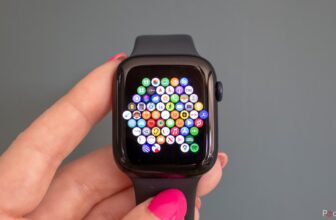On Monday, April 8, a complete photo voltaic eclipse will probably be seen throughout a swath of North America, from Mexico’s Pacific coast to the easternmost reaches of Canada. And in these couple of minutes of daytime darkness, all types of fascinating phenomena are identified to happen — phenomena NASA would love our assist measuring.
Throughout a complete photo voltaic eclipse, temperatures might drop and winds might decelerate or change their course. Animals have been noticed to behave unusually — you may hear crickets begin their night chatter just a few hours early. Even radio communications may be disrupted resulting from adjustments within the ionosphere whereas the solar’s mild is blocked. And, the solar’s corona — its outermost environment — will become visible, presenting scientists (and people of us serving to them) with a uncommon alternative to review this layer that’s usually invisible to the bare eye.
NASA has a number of analysis efforts deliberate for the eclipse, and has sponsored a handful of citizen science campaigns that anybody can participate in in the event that they’re in or close to the trail of totality, or the areas where people on the ground can watch the solar grow to be utterly obscured by the moon. The trail of totality crosses 13 US states, together with components of Texas, Oklahoma, Arkansas, Missouri, Illinois, Kentucky, Indiana, Ohio, Pennsylvania, New York, Vermont, New Hampshire and Maine. It’s an occasion of some significance; the subsequent time a complete photo voltaic eclipse passes over that a lot of the contiguous US received’t be till 2045.
All you’ll want to hitch in is gear you already personal, like a smartphone, and some minutes put aside earlier than the eclipse to undergo the coaching supplies.
Assist measure the form of the solar
One such citizen science challenge is , a concerted effort to measure the true form of the solar. Whereas the solar is nearer to being an ideal sphere than different celestial our bodies which were noticed, it’s nonetheless technically an oblate spheroid, being a smidge wider alongside its equator. The SunSketcher workforce plans to get a extra exact measurement by crowd-sourcing observations of Baily’s Beads, or the little spots of daylight that peek out from behind the moon at sure factors within the eclipse.
The Baily’s Bead impact is “the final piece of the solar seen earlier than totality and the primary to seem after totality,” NASA defined in a . “For just a few seconds, these glimmers of sunshine appear like beads alongside the moon’s edge.” They’re seen because of the uneven topographical options on the lunar floor.
You’ll must obtain the free SunSketcher app, which is accessible for iOS and Android on the and . Then, a couple of minutes earlier than totality (the precise time is location-dependent), put your cellphone on Do Not Disturb, hit “Begin” within the app and prop up the cellphone in a spot the place it has a superb view of the solar. After that, go away or not it’s till the eclipse is over — the app will robotically take footage of Baily’s Beads as they present up.
There’s a on the SunSketcher web site if you wish to familiarize your self with the method beforehand. When it’s all stated and achieved, the images will probably be uploaded to SunSketcher’s server. They’ll ultimately be mixed with observations from throughout to “create an evolving sample of beads” that could possibly shed higher mild on the dimensions and form of the solar.
The SunSketcher photographs most likely received’t blow you away, so should you’re hoping to get some nice footage of the eclipse, you’ll need to have one other digicam readily available for that (with the suitable filters to guard your eyes and the gadget’s sensors).
Report adjustments in your environment
Eclipse-watchers may use their smartphones to document the environmental adjustments that happen when the solar dips behind the moon as a part of a problem run by World Studying and Observations to Profit the Surroundings (Globe). You’ll want an air temperature thermometer as nicely for this job, and might begin logging observations within the days earlier than the eclipse should you really feel like being additional thorough.
Temperatures on the floor can, in some circumstances, drop as a lot as 10 levels Fahrenheit throughout a complete photo voltaic eclipse, in keeping with NASA. And sure sorts of clouds have been noticed to dissipate throughout these temporary cooldowns, leading to unexpectedly clear skies within the moments earlier than totality. Knowledge collected with the assistance of citizen scientists in the course of the 2017 complete photo voltaic eclipse confirmed that skilled a much less excessive drop in floor temperatures.
To take part this time round, obtain the Globe Observer app from the or , after which open the Globe Eclipse instrument from the in-app menu. There, you’ll have the ability to jot down your temperature measurements and take photographs of the sky to document any adjustments in cloud cowl, and make notes concerning the wind circumstances. Plan to dedicate just a few hours to this one — NASA asks that you simply embody observations from 1-2 hours earlier than and after the eclipse along with what you’ll document throughout. “You’ll measure temperature each 5-10 minutes and clouds each 15-Half-hour or everytime you see change,” NASA says.
You’ll be able to preserve utilizing the Globe Observer app for citizen science past eclipse day, too. There are applications operating all 12 months spherical for recording observations of issues like clouds, land use, mosquito habitats and tree heights. The eclipse instrument, although, is simply accessible when there’s an eclipse occurring.
Hearken to the sounds of wildlife
Observations going again almost 100 years have added help to the concept complete photo voltaic eclipses quickly throw some animals out of whack. Impressed by a 1935 examine that gathered observations on animal habits throughout an eclipse three years prior, the is inviting members of the general public to be aware of what they hear earlier than, throughout and after totality, and share their findings.
To be an for the challenge, it’s beneficial that you simply first enroll on the web site and undergo the temporary coaching supplies so you may get a way of what kind of knowledge the challenge is on the lookout for. The web site additionally has printable discipline notes pages you need to use to document your observations on eclipse day. You must begin taking notes down at the least 10 minutes earlier than totality. Solely after the eclipse is over will it’s essential to fill out the webform to submit your observations alongside together with your latitude and longitude.
For those who occur to have an AudioMoth acoustic monitoring gadget and a spare microSD card mendacity round, you’ll be able to go a step additional and document the precise sounds of the atmosphere in the course of the eclipse as a . You’ll must set the whole lot up early — the challenge says to do it on Saturday, April 6 earlier than midday — and let it document till at the least 5PM native time on April 10. At that time, you’ll be able to flip it off, submit your notes on-line and mail within the SD card. The entire particulars for submission may be discovered on the challenge’s web site.
Take photographs of the photo voltaic corona
The is an initiative designed to review the solar’s corona and plasma plumes from places within the path of totality, constructing off of a earlier marketing campaign from the 2017 complete photo voltaic eclipse. It’s already chosen a workforce of 100 Science Workforce Alpha Recruits (STARs) who underwent coaching and got 3D-printed monitoring mounts for his or her cameras to shoot the absolute best photographs. However, the challenge will nonetheless be accepting photograph submissions from any lovers who’ve a DSLR (and a photo voltaic filter) and need to take part.
The is fairly exhaustive, so don’t wait till eclipse day to start out determining your setup. You’ll have the ability to submit your photographs after the eclipse via a kind on the web site.
Nevertheless you select to spend the eclipse, whether or not you’re amassing knowledge for a citizen science mission or simply planning to chill and observe, ensure you have the whole lot in place nicely forward of the time. Whereas the partial eclipse phases will final over an hour, totality will probably be over and achieved in about 3.5-4.5 minutes relying on the place you’re watching from. You wouldn’t need to miss out on a few of that point since you have been fumbling together with your digicam.
Totality will begin shortly after 11AM native time (2PM ET) for western Mexico, transferring northeastward over the following two-or-so hours earlier than exiting land close to Newfoundland, Canada round 5:30PM native time. There’ll nonetheless be one thing to see for individuals outdoors the trail of totality, too. Many of the US will probably be handled to a partial eclipse that day. You will discover out precisely when the eclipse will probably be seen out of your location with , together with the proportion of solar protection you’ll be able to count on to witness.
Trending Merchandise

Cooler Master MasterBox Q300L Micro-ATX Tower with Magnetic Design Dust Filter, Transparent Acrylic Side Panel…

ASUS TUF Gaming GT301 ZAKU II Edition ATX mid-Tower Compact case with Tempered Glass Side Panel, Honeycomb Front Panel…

ASUS TUF Gaming GT501 Mid-Tower Computer Case for up to EATX Motherboards with USB 3.0 Front Panel Cases GT501/GRY/WITH…

be quiet! Pure Base 500DX Black, Mid Tower ATX case, ARGB, 3 pre-installed Pure Wings 2, BGW37, tempered glass window

ASUS ROG Strix Helios GX601 White Edition RGB Mid-Tower Computer Case for ATX/EATX Motherboards with tempered glass…










